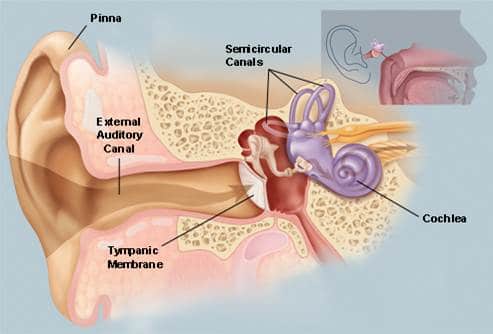By Marshall Chasin, AuD
The following post was originally published in The Hearing Review and appears here by permission.
For the past several years the National Geographic channel has broadcast a panel show called “Duck Quacks Don’t Echo.” The panel’s role is to tell if a certain science story is true or false. One of the biggest myths is whether there can be an echo from a duck’s quack. Well, who better than an audiologist to handle this brain-teaser?
Duck quacking is similar to any noise source. So, as long as there are significant obstructions such as a cliff, a wall, or even some rocks nearby, there will be an echo. There is nothing special about a duck quacking, but I think that we are getting ahead of ourselves.
The first thing an audiologist needs to do is to get a duck. After that, the next step is to determine if there is any energy above about 100 Hz in the duck’s quack. It’s not that the very low-frequency sounds don’t reflect and create echoes; it’s that any obstruction to reflect the quack has to be at least one half the wavelength of the sound.
I went looking around my audiology clinic and happened to find a duck. The hard part was getting the duck into my booth to do a good recording. The audio waveform and the spectrum are shown in the figure below. As expected, the peak in the spectrum was roughly 2300 Hz. This was expected because any sound source that is sudden, such as the click of an ABR signal, the percussive hit of a drum stick, or the quack of a duck, needs to be relatively broad band with most of its energy in the higher frequency region. You simply cannot have a low-frequency duck quack (or ABR click).

Since a reflection occurs with any obstruction that is at least half the wavelength of the sounds, higher frequency sounds reflect better; they have shorter wavelengths so they are more susceptible to reflect and cause echoes.
For example, if we wanted to determine if a 1000-Hz signal would reflect we would need to determine its wavelength and then take one half of that. Given that the speed of sound is 340 m/sec, a 1000-Hz signal has a wavelength of 0.34 meters (or a little over a foot). Any obstruction that is 0.17 meter (or about 6 or 7 inches) will be wide enough to cause the 1000-Hz sound to reflect. And a 2000-Hz signal would only need an obstruction of 0.08 meters or about 3-4 inches wide in order to reflect. Therefore, a 2300-Hz sound, which is prevalent in the quack of a duck, would only require an obstruction of maybe 3 inches thick to cause it to reflect, and as long as we can measure this reflection, or stick around long enough to hear it, there indeed would be an echo.
The above reasoning assumes that any obstruction where a duck would live or fly would indeed be at least 3 or 4 inches thick. This could include cliff sides, large rocks, or even banks on riversides.
Lower frequencies have longer wavelengths which require a much thicker obstruction. For example, a low frequency of 100 Hz would have a wavelength of 3.4 meters or 11 feet. This means that for a 100-Hz signal to reflect, the reflective obstruction would need to be 5-6 feet thick. This is possible if it’s a cliff side, but questionable otherwise.
And what do duck quacks teach us about room acoustics? Given the typical wall thickness in many rooms, much of the quack would be heard as a reflection (echo) off the wall, and the occupants in the next room might only hear a muffled sound at most. Most of the mid and higher frequency consonants sounds in language have most of their energy above 2000 Hz so these sounds would also reflect back into the room, just like a duck’s quack. In contrast, the lower frequency vowels would go right through the wall and be heard by the people next door, with little or no reflection.






